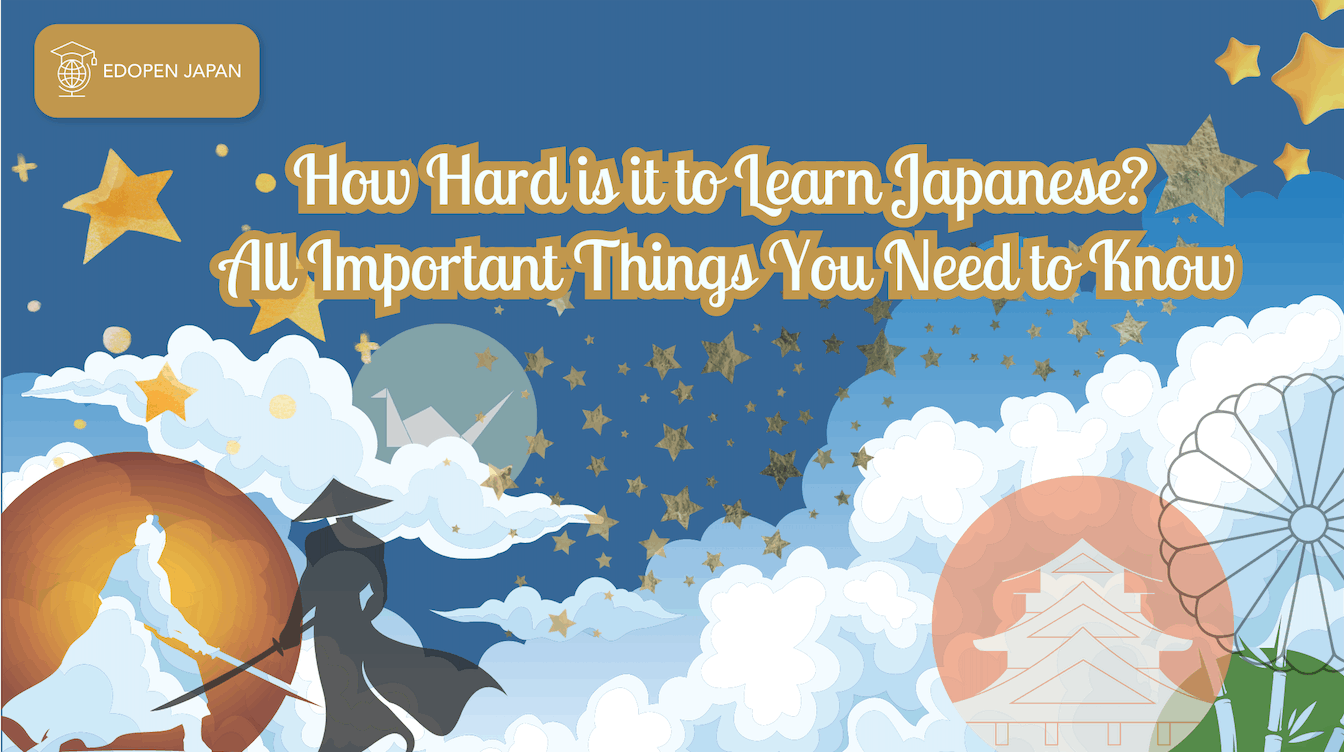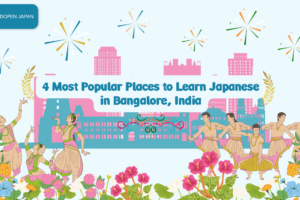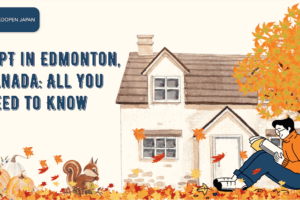Many people think that Japanese is a difficult language to learn, and some even consider it to be one of the most complicated languages in the world, equal to or even harder than Chinese. Or some people think that only people who can already read moon-runes can learn to speak Japanese fluently like Chinese speakers, and it is a terrible idea to even try if your native language is English, but is that really true?
In this article, we will look at some of the characteristics of the Japanese language and compare it to other languages and to English to show its similarities, differences and quirks. By the end of this article, you will be able to decide for yourself if Japanese is as hard to learn as it is commonly believed, or if it is actually quite easy to learn.
In addition, if you are currently studying Japanese, such as vocabulary that is often used in everyday Japanese conversation, please also read our recommendations below!
What’s the Meaning of “Sasuga” (さすが)?
What’s the Meaning of “Naruhodo (なるほど)”?
How to Use “Yoroshiku Onegaishimasu”?
The Japanese Grammar
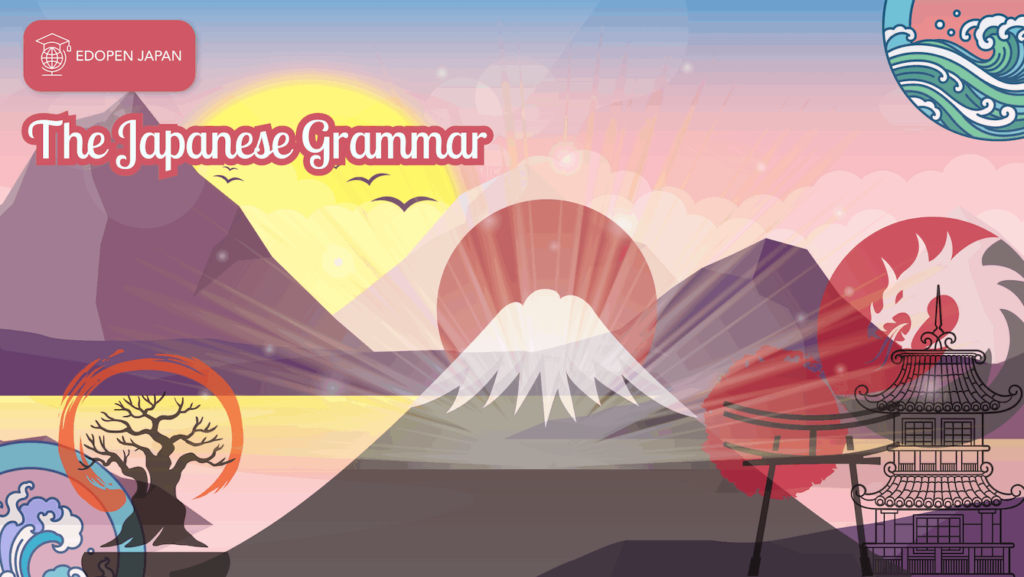
A Gender
In contrast to Romance and other similar languages, pronouns and nouns do not have a gender. For example, while in Spanish every noun has a gender assigned to it, such as “ball” in Spanish is “La pelota,” in Japanese, as in English, words do not have a gender, so “ball” is simply “`ボール” (Booru).
This reduced the amount of information to memorize to just the pronunciation and the word itself. It also doesn’t have definite or indefinite articles, so there is no difference in Japanese between “the ball” and “a ball”; in both cases it will simply be “ball”.
No Plural Forms (In General)
For most nouns in Japanese, there is no need to remember whether they are singular or plural. For example, in English, a group of sheep is called a herd. In Japanese, you would just use “羊. It doesn’t matter if there are one, two, or two hundred. All of them would be sheep.
For example, you are on a trip and you are on a hill. There are many sheep, whereas in English the grammatically correct way would be to say, “There’s a flock of sheep over there! In Japanese, the correct way to say it would simply be “羊がいる!” (Hitsuji ga iru!).
There is one exception, mainly when referring to nouns. One would add plural suffixes, such as the formal たち (Tachi) or the informal ら (Ra). Thus, while 私 (Watashi) would be used to refer to yourself, 私たち (Watashi-Tachi) could be used to refer to “we.
Then, it is important to say that these exceptions are rare and are mainly used when referring to proper nouns or when it is necessary to denote a plurality for the context. The good thing is that there are no other exceptions, so if there is a need to add plurality, it will never be a mistake to simply use たち.
Verbal Nouns
Japanese has a generic verb “する” (Suru), which would be like “Do” in English. This means that if there is something you need to do or have done, it can be explained simply by grabbing the noun and adding the general verb at the end, making it already the verb explaining the action.
An example would be “買い物” (Kaimono), which would simply translate as “bought items”. So if you add the general verb “買い物する” (Kaimono suru), it would become “shopping”.
Pronouns are Omitted!
Japanese does have pronouns, such as he 彼 (Kare), she 彼女 (Kanojo), and a whole host of others to choose how you prefer to refer to yourself; from the agender and formal 私 (Watashi) to the masculine and informal 俺 (Ore) and its feminine counterpart あたし (Atashi). Although they exist, they are usually omitted.
In Japanese, it is common to infer who you are referring to in a sentence from the previous context or simply from the absence of a pronoun. For example. If you were to say “I went shopping yesterday” in Japanese, you would only have to say 昨日,買い物した (Kinou, kaimono shita) Yesterday I went shopping. As you can see, there is no need to refer to yourself in the sentence. This makes the sentences shorter and at the same time reduces the possibility of making a mistake, or a great safeguard if you forget someone’s name!
The Elimination of Particles
One of the things that can make Japanese confusing to native speakers of European languages is the existence of “particles”, which are small blocks that combine pronouns, nouns, and verbs to form a sentence. The most common ones are は(wa)、が(ga)、に(ni)、へ(e)、を(o). And the biggest problem with them is that they have no direct translation into English. But the exciting thing is that in Japanese it is easy.
It is pretty standard that if you are not speaking informally, such as through an SNS or with friends, even without being present, the particles can be inferred so that they can be removed from the sentence entirely.
Thanks to this, the receiver will actually understand the meaning of your sentences without having to worry about whether the particle you are using is correct or not! For example. While the correct and polite way to write “I went to my friend’s house yesterday” in Japanese would be as follows:
- 昨日は友達の家に行きました。
(Kinou Wa Tomodachi no Ie ni Ikimashita)
Yesterday + wa + Friend’s house + ni + Went
Then, in an informal conversation, such as with a friend, it would simply be:
- 昨日友達の家行った。
(Kinou Tomodachi no Ie Itta)
Yesterday I went to my friend’s house.
Informal and Formal Verbs
In one way or another, all verbs in Japanese are regular, so there are no irregular verbs, such as English “Eat” becoming “Ate” in the past tense. There are simply two groups of verbs in Japanese, Godan verbs and Ichidan verbs. Having two regular groups makes it easy to remember some simple rules for each of the groups and with that you will be able to conjugate and use all the new vocabulary you learn right away.
Even better, it is easy to tell which group most of the verbs belong to, with some easy to spot exceptions. For example, all Ichidan verbs end in る “Ru”. In Japanese, there is no need to check the dictionary every time you learn a new word to find out its past tense, imperative, progressive, etc.
Even better, if you don’t mind speaking formally, all verbs in formal Japanese act and are conjugated the same way! This is called the ます(Masu) form of the verb. It is so easy to conjugate verbs in the formal form that some Japanese study guides even recommend that new Japanese learners start with the formal form because it is super easy to master!
For example, “eat” in Japanese would be 食べます (Tabemasu) and simply changing the ます (Masu) to ません(Masen) makes it negative, for ました(Mashita) to make it past tense, and ませんでした (Masendeshita) to make it the negative past form of Eat.
Future Condition
It is said that the Japanese language has no future. And it is true, the Japanese language has no future tense! There is no will, might, going to, etc. In Japanese, it is simply explained by changing the time of the action with the present tense.
For example, if you say “I will eat sushi tomorrow”, it would become あしたは寿司を食べる (Ashita Wa Sushi O Taberu) Tomorrow Wa Sushi O Eat. This reduces the number of conjugations and the variety of words used to express the future tense in English to simply none.
Japanese Reading & Writing
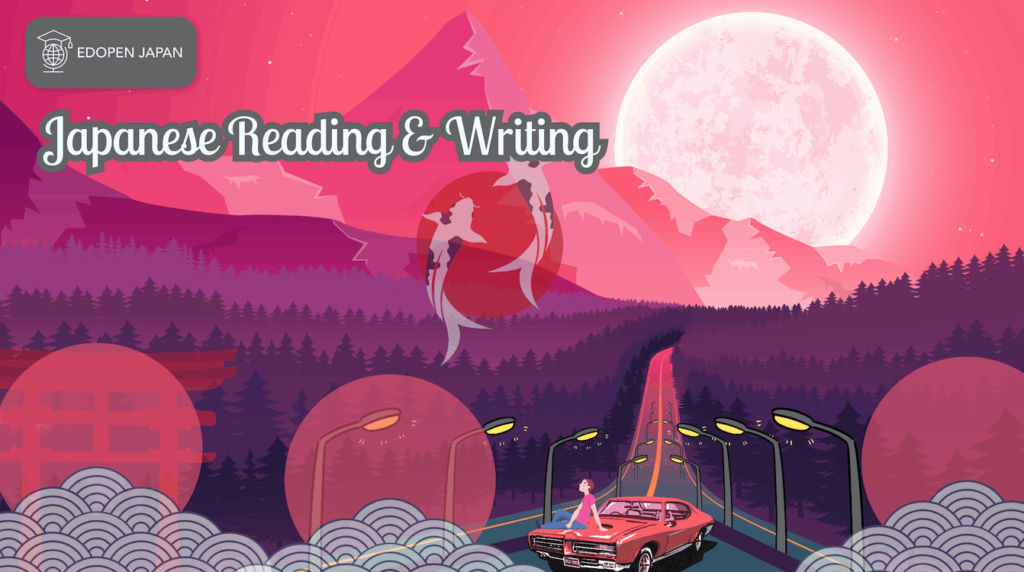
This is a good time to talk about the biggest elephant in the room when it comes to learning Japanese. The writing system makes it seem so difficult to learn because it has not one, but three different writing systems.
It has Hiragana, Katakana, and the Chinese originated characters called “Kanji” in Japanese. And while some people try to say that it is unnecessary to learn all of them because “Japanese people mostly use only Hiragana and only some Kanji”, it is my duty to tell you, the reader, that all 3 are used in everyday life. But there is always light at the end of the tunnel. But first, the 3 different writing systems will be explained below.
Hiragana
Hiragana is the one that is usually taught first in Japanese, and it is the one that is used to enter the other two in Japanese when typing. It is necessary to say that hiragana is not an alphabet, but a syllabary. It is closer to the phonetic symbology used in dictionaries to explain how a word is pronounced in English than to the Latin alphabet.
Hiragana always looks “curvy” and is the easiest of the three to distinguish; it is usually used to add the “restant pronunciation” of kanji or for particles and conjugations.
For example, “eat” (食べる) is written with the kanji 食 and the hiragana for the rest of the word べる. With more than 50 characters, it may look a lot more complex than the Latin alphabet. While this is true in terms of the number of characters, each character has only one or at most two pronunciations, and these extra pronunciations are used only in exceptional cases.
For example, to distinguish particles such as は, which is usually pronounced Ha (as in Ham), but when used as a particle is pronounced Wa (as in Waldo). This makes it easier to learn because every time you use a hiragana, you know how to pronounce it correctly from the beginning. Meanwhile, in English, we could simply see that each E in “Mercedes” is pronounced differently.
Katakana
Katakana is similar to hiragana in that it is also a phonetic syllabary, so it also consists of about 50 characters and their variations, each of which corresponds to another character in the hiragana syllabary. You might ask why there are two writing systems if they both have the same number of characters and pronunciations?
Well, the reason is that while hiragana is used for Japanese words and phrases, katakana is used for borrowed words and phrases from another language, such as English! For example:
- ボール(Booru) “ball”
ペン(pen)
スマホ(Sumaho) “smartphone”
Kanji
And finally, there is Kanji. Kanji is the system “imported” from China and is the oldest writing system used in Japan. In fact, it is from the modification of Kanji that the other two, Hiragana and Katakana, were created. But what is a kanji? Is it a character? A syllable like the other two?
First of all, kanji is a character that contains an idea. For example, 食 means “to eat” and 飲 means “to drink. These kanji have a meaning by themselves, so just by looking at them, a person would understand what they mean.
Without anything else. Just that it wouldn’t be anything but an idea, nothing about its context or form. This is what hiragana is for in Japanese. Hiragana is used to add context and turn the idea conveyed by the kanji into a word or phrase with actual meaning.
What is the pronunciation of a kanji? In Japanese, although in most cases a single kanji character has a single meaning, its pronunciation will change depending on the hiragana or even other kanji characters next to it.
An example of this would be 食べる(taberu) “to eat” and 飲む(nomu) “to drink”; when the two are together, both their pronunciations change to 飲食(inshoku) and the meaning also changes to “consumption (of food and drink)”.
You might ask, there are many pronunciations and a myriad of kanji to learn! How am I supposed to learn them all?! Well, fortunately, there is a trick to learning kanji most of the time; kanji in Japanese have two types of pronunciation: On-Yomi and Kun-Yomi.
On-yomi is the one that is close to the original pronunciation in Chinese, and it is the one that is used when a kanji is used together with another kanji. For example, 食 would be pronounced (Shoku) with another kanji.
Additionally, Kun-Yomi is used when the kanji is alone or in exceptional cases. Another tip is that complex kanji usually get their On-Yomi pronunciation from the “roots” or simpler kanji that make them up. For example, most kanji that have the root kanji 工 (Kou) have the same pronunciation, such as 項(Kou) & 功(Kou). Just by knowing the roots, you could “guess” the pronunciation of a kanji you just saw for the first time.
How many kanji do you need to know to read Japanese? According to the list of kanji that everyone should know「常用漢字」(Jouyou Kanji), you should know 2,136 kanji. But this is an estimate, and depending on the situation and environment, one would use about 500~1000 different kanji per week.
Vocabulary
As for vocabulary in Japanese, recently the number of loanwords used in everyday life has been on the rise, especially among the younger generation; this gives an exciting edge to English-speaking people trying to learn Japanese, as a significant number of loanwords come from English with Japanese pronunciation. Some examples would be as follows:
- スマホ
(Sumaho)
-sma-rt-pho-ne - アプリ
(Apuri)
Appli-cation - パソコン
(Pasocon)
Perso-nal -com-puter - エアコン
(Eacon)
Air con-ditioner - コンビニ
(Conbini)
Conveni-ence store - バイク
(Baiku)
Bike
Pronunciation
When it comes to pronunciation, Japanese is one of the easiest languages in the world! Japanese has only the basic vowels, as follows:
- あ A (as a in Jam)
- い I (as i in Mint)
- う U (as oo in Moon)
- え E (as e in Wet)
- お O (as o in Polar)
And they never change their pronunciation; it doesn’t matter if they are repeated in the same word or what consonant precedes them. Their pronunciation never changes. If they are repeated one after another, the only thing that happens is that the sound is prolonged.
Another peculiarity of the Japanese language is that, except for ん(n), there are never two consonants together: it is always a consonant followed by a vowel, which makes it easier for the mouth to pronounce compared to other languages.
There is also no “Th” sound, not the Spanish rolled “R” in Japanese. There are also no guttural sounds. This makes Japanese pronunciation relatively easy to master compared to Russian, German, or Spanish; it is even much easier to pronounce than the languages with which Japanese is usually grouped, such as Chinese or Korean. Even English has a more complex pronunciation system than Japanese.
Japanese Handwriting
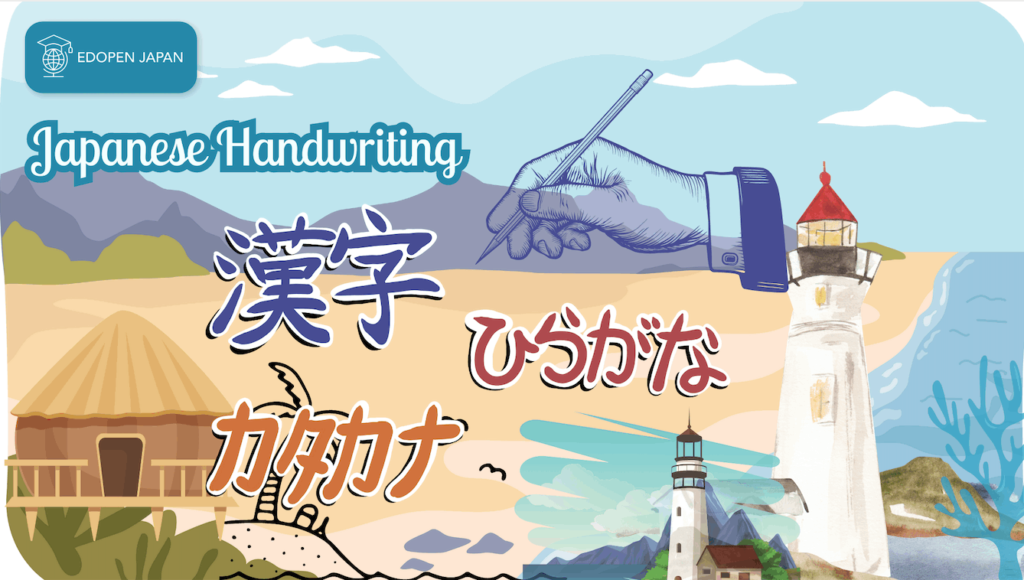
Let’s face it, Japanese writing is quite difficult to master, mainly because it doesn’t look at all like the commonly used Latin alphabet, so it’s like learning to write from scratch. But thanks to recent developments in technology and the normalization of the use of phones and laptops in the classroom.
The times when it is a necessity to be able to write Japanese are becoming less common every year, making it a perfect environment to focus only on reading Japanese instead of both reading and writing. In fact, it’s been known for some Japanese people to forget some kanji because they haven’t written Japanese by hand for a long time.
Summary
In summary, while Japanese may look like quite a challenge to learn even for experienced language learners, it has a lot of potential thanks to its simplicity in a certain way when it comes to grammar and pronunciation, its sudden complexity with its writing system may make it look a lot more complicated than it actually is.
So, if you want to learn Japanese. If you try the right way and prepare beforehand, you might be surprised at how easy Japanese is instead of what is usually thought.

